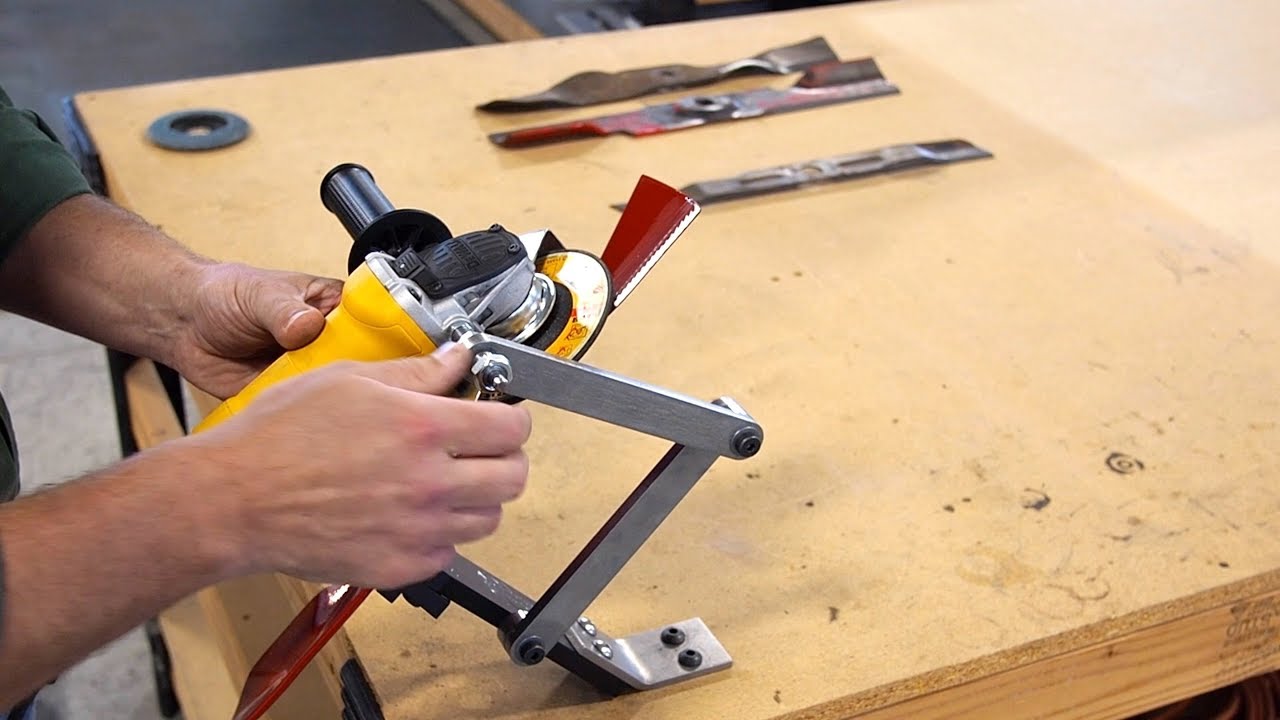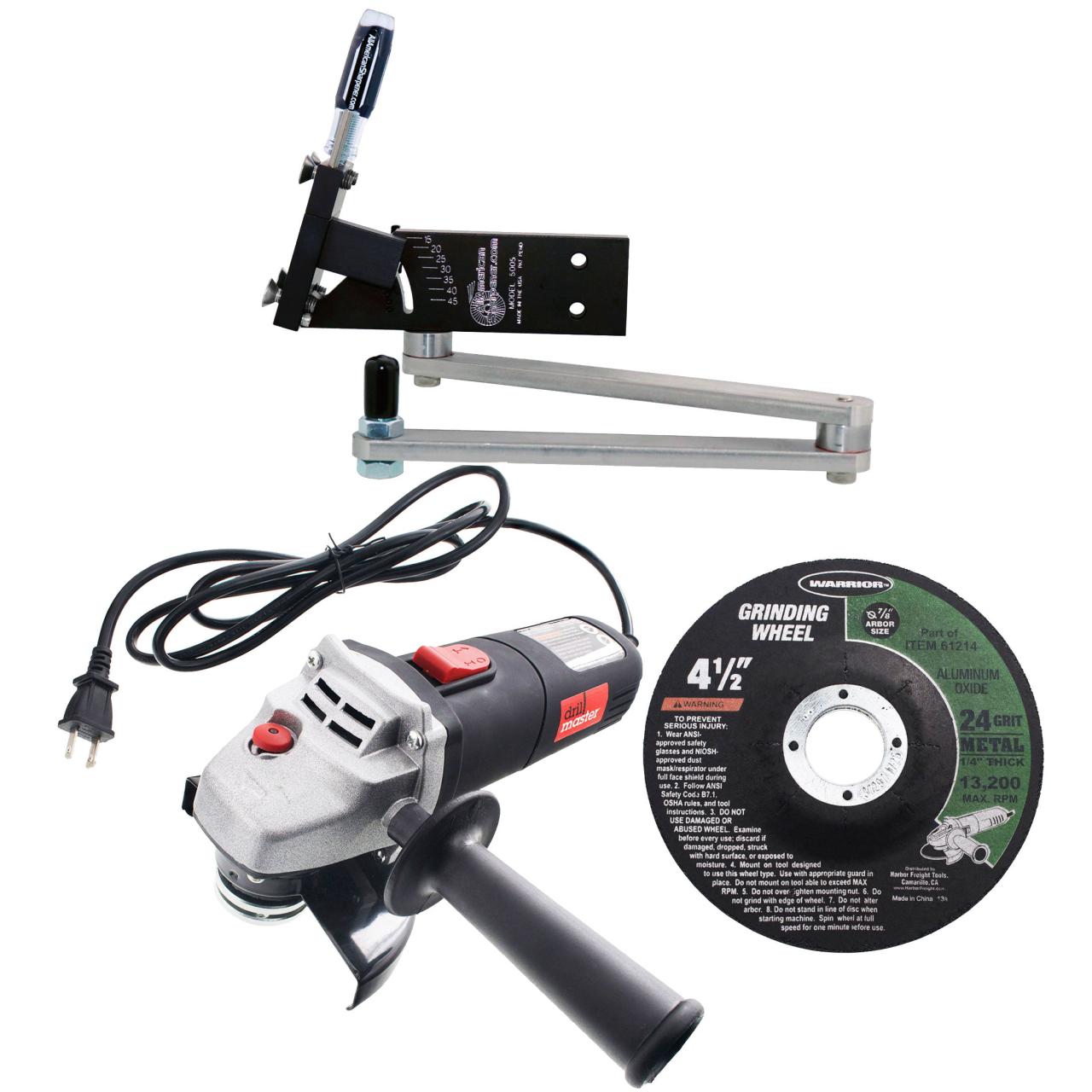With lawn mower blade sharpeners, you can bid farewell to dull blades and hello to a lush, manicured lawn. Discover the types, features, and techniques involved in keeping your lawn mower blades razor-sharp, ensuring a pristine lawn that’s the envy of the neighborhood.
From manual sharpeners to electric marvels, this comprehensive guide will empower you to choose the perfect sharpener for your needs, ensuring a smooth and efficient sharpening process.
Introduction
Maintaining a lush and healthy lawn requires regular mowing, and sharp lawn mower blades are essential for optimal lawn care. Dull blades tear grass instead of cutting it cleanly, leading to ragged edges, increased susceptibility to diseases, and a less attractive appearance.
Lawn mower blade sharpeners are invaluable tools that restore the sharpness of dull blades, ensuring a clean and precise cut. By using a blade sharpener, you can extend the lifespan of your mower blades, improve the quality of your lawn, and save money on costly replacements.
Features to Consider When Choosing a Lawn Mower Blade Sharpener
Choosing the right lawn mower blade sharpener is crucial for maintaining a sharp and efficient cutting edge on your mower blades. Several key features should be considered to ensure you select the sharpener that best meets your needs and provides optimal performance.
Power
The power of a lawn mower blade sharpener is measured in watts or horsepower. Higher power indicates a stronger motor, which can handle thicker blades and sharper angles more effectively. A more powerful sharpener will also be able to sharpen blades faster, saving you time and effort.
Speed
The speed of a lawn mower blade sharpener is measured in revolutions per minute (RPM). Higher speeds allow for faster sharpening, but it’s important to find a sharpener with adjustable speed settings to accommodate different blade types and sharpening angles.
Blade Angle Adjustment
Blade angle adjustment allows you to customize the sharpening angle to match the specific blade type and desired cutting performance. Different blades require different sharpening angles to achieve optimal results. A sharpener with adjustable blade angle settings ensures you can sharpen blades to the manufacturer’s specifications or your own preferences.
How to Use a Lawn Mower Blade Sharpener
Using a lawn mower blade sharpener requires safety precautions and proper techniques to ensure effective sharpening. Here’s a step-by-step guide to help you sharpen your lawn mower blades safely and efficiently:
Safety Precautions
- Wear protective gloves to avoid cuts.
- Disconnect the spark plug or remove the battery before starting any work.
- Secure the lawn mower on a stable surface to prevent it from moving.
Blade Positioning and Sharpening Angle
Position the blade on the sharpener according to the manufacturer’s instructions. Ensure that the cutting edge is facing the grinding wheel. The sharpening angle should be maintained at around 25-30 degrees for most lawn mower blades.
Sharpening Process, Lawn mower blade sharpener
- Start the sharpener and slowly move the blade across the grinding wheel, applying light pressure.
- Sharpen each side of the blade evenly, making sure to remove any nicks or burrs.
- Check the sharpness of the blade by running your finger along the cutting edge. It should feel sharp but not overly aggressive.
Tips
- Use a fine-grit grinding wheel for a smoother finish.
- Sharpen the blade regularly, especially after hitting hard objects or obstacles.
- Balance the blade after sharpening to ensure it rotates evenly.
Maintenance and Care of Lawn Mower Blade Sharpeners

Regular maintenance and care are crucial for ensuring the optimal performance and longevity of your lawn mower blade sharpener. Neglecting these tasks can lead to reduced efficiency, premature wear and tear, and even safety hazards.
If you’re looking for a portable power source, the Jackery Solar Generator 1000 Pro is a great option. It’s lightweight and easy to carry, and it can provide power to your devices for hours. Whether you’re camping, tailgating, or just need a backup power source, the Jackery Solar Generator 1000 Pro is a great choice.
To maintain your lawn mower blade sharpener, follow these essential steps:
Cleaning
After each use, clean the sharpener thoroughly to remove any grass clippings, dirt, or debris. Use a brush or compressed air to dislodge loose particles. For stubborn grime, wipe down the sharpener with a damp cloth and a mild detergent solution.
Avoid using harsh chemicals or abrasive cleaners, as they can damage the sharpener’s components.
If you’re looking for the best electric chainsaw in 2023, look no further than this roundup . It features a variety of top-rated models, so you can find the perfect one for your needs. Whether you’re a homeowner who needs to trim branches or a professional who needs to cut down trees, there’s an electric chainsaw that’s right for you.
Lubrication
Regular lubrication is essential to reduce friction and wear on the sharpener’s moving parts. Apply a few drops of light machine oil or a specialized lubricant to the sharpening wheel, bearings, and any other moving components. Refer to the manufacturer’s instructions for specific lubrication points and recommended lubricants.
Storage
When not in use, store the lawn mower blade sharpener in a dry, clean, and well-ventilated area. Protect it from moisture, extreme temperatures, and direct sunlight. Store the sharpener upright to prevent damage to the sharpening wheel. Additionally, consider covering the sharpener with a protective cover to keep it free from dust and debris.
Troubleshooting Common Issues with Lawn Mower Blade Sharpeners

Lawn mower blade sharpeners can occasionally experience issues that affect their performance. Understanding these common problems and their troubleshooting tips can help ensure optimal sharpening results and extend the lifespan of your sharpener.
Uneven Sharpening
Uneven sharpening occurs when different sections of the blade are sharpened to varying degrees, resulting in an unbalanced cut. This can be caused by:
- Improper blade positioning: Ensure the blade is correctly aligned in the sharpener’s holder.
- Worn sharpening stone: Replace the stone if it shows signs of uneven wear or damage.
- Incorrect sharpening angle: Adjust the sharpening angle according to the manufacturer’s instructions.
Blade Damage
Blade damage can occur due to excessive force or improper sharpening techniques. Signs of blade damage include:
- Nicks or cracks on the blade edge
- Overheating or discoloration of the blade
- Reduced cutting efficiency
To prevent blade damage:
- Use the sharpener as directed and avoid applying excessive pressure.
- Sharpen the blade regularly to maintain a sharp edge.
- Inspect the blade for damage before each use.
Motor Problems
Motor problems can hinder the sharpener’s operation. Common motor issues include:
- Overheating: Allow the motor to cool down if it becomes hot during use.
- Stalling: Check for any obstructions or jammed parts that may be hindering the motor’s rotation.
- Electrical issues: Ensure the sharpener is properly plugged in and there are no loose connections.
Final Conclusion
With a sharp lawn mower blade, your lawn will not only look its best but also promote healthier growth and reduce strain on your mower. By following the tips and advice provided in this guide, you can achieve a professional-looking lawn with minimal effort.
Key Questions Answered
How often should I sharpen my lawn mower blades?
Sharpen your blades every 20-25 hours of use or once a season for optimal performance.
What is the best type of lawn mower blade sharpener?
The best type depends on your needs and budget. Manual sharpeners are affordable and portable, while electric sharpeners offer faster and more precise sharpening.
Can I sharpen my lawn mower blades myself?
Yes, with the right tools and safety precautions, you can sharpen your blades at home. Follow the step-by-step instructions provided in this guide.